National Healthcare Quality and Disparities Report
Latest available findings on quality of and access to health care
Data & Analytics
- Data Infographics
- Data Visualizations
- Data Tools
- Data Innovations
- All-Payer Claims Database
- Consumer Assessment of Healthcare Providers and Systems (CAHPS®) Program
- Healthcare Cost and Utilization Project (HCUP)
- Medical Expenditure Panel Survey (MEPS)
- National Healthcare Quality and Disparities Report Data Tools
- Network of Patient Safety Databases
- AHRQ Quality Indicator Tools for Data Analytics
- Surveys on Patient Safety Culture
- United States Health Information Knowledgebase (USHIK)
- Data Sources Available from AHRQ
Data Resources
Filter by Topic
- Access to Care (4)
- Adverse Events (1)
- Ambulatory (2)
- By Payer (2)
- By State (3)
- Children (1)
- (-) Children (3)
- Children/Adolescents (1)
- Clinicians (1)
- Community Pharmacies (1)
- Costs (2)
- Costs & Charges (1)
- (-) Coverage (4)
- Data (3)
- Discharges by State (1)
- Disparities (2)
- Elderly (1)
- Element Definitions, Values & Information Models (1)
- Emergency Departments (4)
- Employer (1)
- Estimates (State & Metro) (1)
- Expenditures & Projections (3)
- Health (5)
- Health Care (8)
- Health Conditions (5)
- Health Plans (3)
- Health Systems (1)
- Hospital Characteristics (2)
- Hospitalizations (10)
- Household Spending (1)
- Injuries Seen (1)
- Inpatient Care (1)
- Insurance (9)
- Medicaid (1)
- Medicare (1)
- Men (1)
- Mental Health (3)
- Mental Health and Substance Abuse Disorders (2)
- Obesity (1)
- Opioids (1)
- Patient Experience (1)
- Payment Sources (1)
- Premiums (1)
- Prescription Drugs (1)
- Preventable (1)
- Private (1)
- Quality (3)
- Readmissions (2)
- Safety Culture (1)
- SCHIP (1)
- Spending (2)
- State (1)
- Surgery (3)
- Systematic Review (1)
- Systems - Characteristics (1)
- Uninsured (2)
- Use (3)
- Visits (2)
- Women (2)
Data Resources
The Agency for Healthcare Research and Quality (AHRQ) offers practical, research-based tools and other resources to help a variety of health care organizations, providers and others make care safer in all health care settings.
Results
1-7 of 7 Resources displayed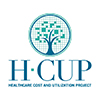
These HCUP Statistical Briefs provide statistics on hospital costs and use in the United States focused on specific types of insurers or payers—Medicaid, Medicare, and private insurance.
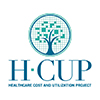
HCUPnet is a free, on-line query system based on data from HCUP. The system provides health care statistics and information for hospital inpatient, emergency department, and ambulatory settings, as well as population-based health care data on counties.
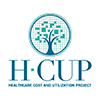
The Kids' Inpatient Database (KID) is the only all-payer pediatric inpatient care database in the United States, containing data from two to three million hospital stays. Its large sample size is ideal for developing national and regional estimates and enables analyses of rare conditions, such as congenital anomalies, as well as uncommon treatments, such as organ transplantation.
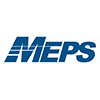
The MEPS Household Component fields questionnaires to individual household members to collect nationally representative data on demographic characteristics, health conditions, health status, use of medical care services, charges and payments, access to care, satisfaction with care, health insurance coverage, income, and employment.

Health insurance coverage of the U.S. population by person and family-level characteristics is collected through the MEPS Household Component. Job-based health insurance coverage offered by employers is collected through the MEPS Insurance Component.
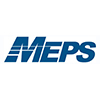
MEPSnet is a collection of analytical tools that operate on MEPS data in two categories: MEPSnet/Household Component provides easy access to nationally representative statistics of health care use, expenditures, sources of payment, and insurance coverage for the U.S. civilian noninstitutionalized population. MEPSnet/HC allows you to generate statistics using MEPS Household Component public use files. MEPSnet/Insurance Component provides easy access to national and state level statistics and trends about health insurance offered by private establishments and state and local governments. MEPSnet/IC guides you step-by-step in locating statistics of interest across all available years using data from the MEPS Insurance Component Summary Data Tables.
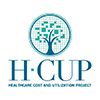
The State Ambulatory Surgery and Services Databases (SASD) are part of the family of databases and software tools developed for the Healthcare Cost and Utilization Project (HCUP). The SASD include encounter-level data for ambulatory surgeries and may also include various types of outpatient services such as observation stays, lithotripsy, radiation therapy, imaging, chemotherapy, and labor and delivery. The specific types of ambulatory surgery and outpatient services included in each SASD vary by State and data year. All SASD include data from hospital-owned ambulatory surgery facilities. In addition, some States include data from nonhospital-owned facilities.



